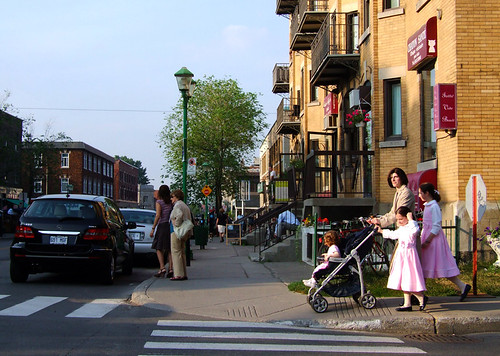![bigstockphoto_isabella_with_doll_1360791[1] bigstockphoto_isabella_with_doll_1360791[1]](https://www.thinkinghousewife.com/wp/wp-content/uploads/2009/10/bigstockphoto_isabella_with_doll_13607911-199x300.jpg)
Children forge their dreams in play. All children, except those who have been deadened in some way, have powerful imaginations. What’s so interesting is that they often dream of things, such as war, mundane domestic tasks or rudimentary construction, that adults come to view with disdain or boredom.
Despite feminist orthodoxy, girls still continue to play with dolls and dollhouses and miniature kitchens. I’m not sure whether these things are viewed with the same contempt as during the heyday of feminist self-discovery in the 1970s, but it seems they continue to be a source of embarrassment for some mothers. This hyper-domesticity in their young daughters represents vestigial fantasies, evolutionary relics of a former era. At best, they are infantile forms of escape, not the stuff of essential preparation.
But, playing house is the enactment of dreams and rarely does one hear, amid all this stifling orthodoxy, of how thrilling these dreams are or how infused with adventure. A play house, with its miniature stove and tiny tea cups, is a field of action comparable to war zones populated by action figures, dinosaurs or plastic solders and horses.
A doll’s face suggests high peril. The whole is immoveable and frozen in place. The smile is sweet, but slightly pained. A doll is not only fragile and vulnerable, she is locked-in, a prisoner of plastic who begs to be brought to life and then sustained. A young girl stands at one side of a locked door. On the other side are those who wish to get in. The doll is the beautiful and lifeless surrogate for those who wish to enter.
Of course, a doll’s needs are never-ending. She must sleep, eat, bathe and dress. She also needs a little entertainment. Over time, many girls neglect the hair of dolls and it becomes so wildly disheveled it suggests mental derangement. This is not necessarily a sign of insufficient love so much as that there is just too much to do. If one only tended to dolls’ physical needs, their souls would languish.
Dolls do best when they have houses. A play house, whether life-sized or miniature, may be the scene of a young girl’s most intense and busy play. When I was six, I was invited to play at the home of an only child. Back then, there were hardly any only children and they were generally considered to be spoiled. My experience was that they all were spoiled. This girl owned an entire large room converted into a play house. The house actually had a façade with a door, as well as a real kitchen, eating area and bedroom. If she had owned a castle with water in a moat or a real limousine, I would have been no more overwhelmed or speechless. It over-stimulated the imagination, but I dreamed about it for years.
Hours pass by in a blur with several dolls perched in chairs around a metal table, small cakes in the oven and a husband about to walk through the door. Those little cardboard boxes and paper cans labeled with real brands are cherished possessions, as are plastic chickens and sausages. There is so much to manage. I realize little girls like to do other things than play house and some aren’t domestic at all. I liked playing war in the dark with twenty other kids and taking prisoners who had to stand behind trees until they were freed. But that was just a kid’s game. Playing house was always part of the mystery and beauty of real life.
Read More »





![bigstockphoto_Playing_In_Leaves_179479[1] bigstockphoto_Playing_In_Leaves_179479[1]](https://www.thinkinghousewife.com/wp/wp-content/uploads/2009/10/bigstockphoto_Playing_In_Leaves_1794791-300x200.jpg)
![bigstockphoto_isabella_with_doll_1360791[1] bigstockphoto_isabella_with_doll_1360791[1]](https://www.thinkinghousewife.com/wp/wp-content/uploads/2009/10/bigstockphoto_isabella_with_doll_13607911-199x300.jpg)


